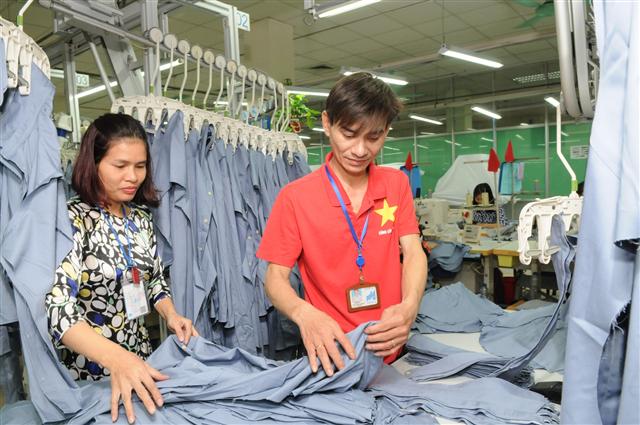MoIT cuts export growth target to 4-5 percent
MoIT cuts export growth target to 4-5 percent
Tran Thanh Hai, Deputy Director of the Ministry of Industry and Trade’s (MoIT) Agency of Foreign Trade said the ministry had set a 4-5 percent export growth target for 2021 after carefully considering existing and potential difficulties caused by the pandemic and changes in global trade.
|
Positive signals
Agency of Foreign Trade Deputy Director Tran Thanh Hai said that from January 1 to February 15, 2021, Vietnam exported goods worth US$38 billion, up 36 percent from the same period last year, while the country’s import value increased 25 percent over the same period last year.
Textile, garment and footwear exports fell up to 10 percent in 2020 but experienced a growth in the first two months of this year. Textile and garment exports, for example, reached an estimated US$2.6 billion, up 3.3 percent from the same period last year.
Le Tien Truong, Board Chair of the Vietnam National Textile and Garment Group (VINATEX) said 2021 will still be a difficult and uncertain year with lower prices and simple goods replacing fashion goods, likely leading to production exceeding demand and new production demands. However, the textile and garment industry sets a target of reaching export revenue of US$39 billion in 2021.
The demand for other commodities, including telephones, machinery, spare parts, and electronic components has increased, resulting in a high growth of these goods exports. The production of those goods has been limited in many countries as a consequence of the pandemic, providing Vietnam with an opportunity to increase exports.
Farm produce exports from January 1 to February 15 increased five percent over the same period last year, Hai said.
|
Appropriate target
Despite the positive signals at the start of 2021, the Ministry of Industry and Trade set a 4-5 percent export growth target, lower than the target of recent years, such as 7% for 2020. The target reassessment stems not only from the pandemic but also due to uncertainty in the international business environment. For example, according to World Bank figures, while exports grew 16.7% in 2017, they slumped to 6.7% in 2019.
Growing protectionism over the past decade has profoundly affected international trade including Vietnam’s foreign trade. Just as the pandemic was not foreseen, all development scenarios need to be prepared for such unforeseen factors as natural disasters, epidemics and conflicts. Vietnam is increasing its participation in international economic communities and is increasingly opening itself up to foreign markets. The ministry’s lower growth target is therefore appropriate, taking all these factors into account, Hai explained.
The pandemic’s impact will linger for at least a few more years, and the market is not expected to resume its pre-pandemic level of activity in the short term. However, businesses should continue to use tools that proved relatively effective in 2020.
“Vietnam signed free trade agreements (FTAs) with many countries and it is time for Vietnamese enterprises to prepare to take advantage of opportunities offered by these agreements,” Hai said. The Ministry of Industry and Trade is simplifying administrative procedures to increase business comfort, Hai added.
| Deputy Director of the Agency of Foreign Trade Tran Thanh Hai said that from January 1 to February 15, 2021, Vietnam exported goods worth US$38 billion, up 36 percent from the same period last year, while the country’s import value increased 25 percent over the same period last year. |




























